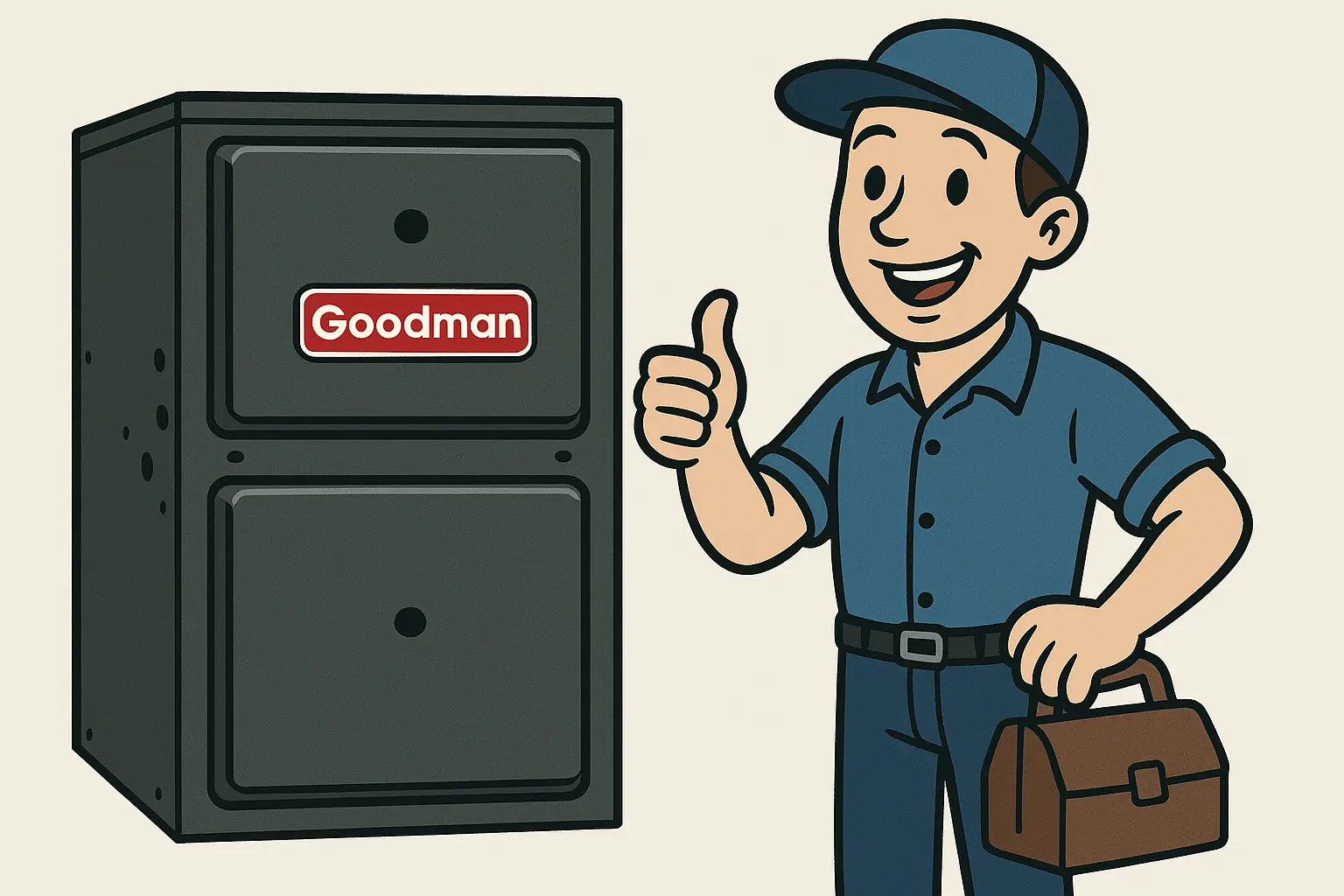Jake’s Intro
Hey, Jake here—coffee in one hand, wrench in the other 😎. If you’re staring down a brand-new Goodman GR9S960803BN, wondering how the heck to get it off the pallet and into your home safely, you’re in the right spot. Today, we’re going full throttle on installation—upflow or horizontal orientation, venting, gas, electrical, and airflow. Stick with me, and your furnace will be singing in no time. 🔥
If you’re thinking of picking one up first, check out the full specs here: Goodman GR9S960803BN furnace.
1. Choosing Your Orientation: Upflow vs Horizontal
-
Upflow: Air blows up into ducts; ideal for basements or closets with floor-level returns.
-
Horizontal: Air moves sideways; perfect for tight crawlspaces or attics.
Tip from Jake: measure clearance carefully—allow for 1–2 inches on all sides and 6–8 inches above for service access. Manual diagrams are your friend.
Helpful resources: Goodman installation manuals
2. Preparing the Installation Site
-
Ensure a level, stable base—no carpeting or unstable floors.
-
Venting must be accessible: for direct-vent, plan your PVC route; for non-direct, plan flue exhaust.
-
Combustion air: Always follow local codes for intake air; insufficient air = poor combustion and CO risks.
Reference: DOE Combustion Appliance Safety Brief
3. Venting Setup
-
Follow manufacturer tables for max PVC lengths.
-
Avoid sagging or unsupported pipes.
-
Check for proper slope to drain condensate away from the furnace.
Pro tip: soap solution for leak testing is safer than flame. Efficiency and safety go hand-in-hand.
4. Gas Line Installation
-
Install a manual shutoff valve near the furnace.
-
Check gas pressure with a manometer—manual specs will tell you ideal range.
-
Tighten fittings with care; over-torque = leaks, under-torque = leaks. 😬
Safety resource: Energy.gov high-efficiency furnace guidance
5. Electrical Wiring
-
Ground per NEC standards.
-
Use proper breaker size (per manual).
-
Wire blower, thermostat, and safety circuits carefully; double-check polarity.
6. Airflow & Ductwork
-
Use the correct filter size (typically MERV 11, 4” thick).
-
Seal duct joints with foil tape—avoid duct mastic that can clog the blower.
-
Confirm airflow unobstructed for all speeds; restricted flow = wear and noise.
7. Startup & Safety Checks
-
Ignite per startup checklist: confirm flame rollout sensors, ignition sequence, and blower operation.
-
Check CO levels with analyzer.
-
Observe LED diagnostic codes; troubleshoot any flashes before leaving the site.
Helpful tip: Energy.gov shows furnace efficiency testing for keeping output high.
Jake’s Final Thoughts
Boom—that’s your full roadmap. Upflow or horizontal, vented, wired, fired up—your GR9S960803BN should be ready to perform like a champ. If you’re still thinking about getting one, check it out here: Goodman GR9S960803BN furnace.
Need more advanced troubleshooting tips for this unit? Visit: From Fault Codes to CO Safety.
Remember: safety first, coffee second, and always follow the manual.
- Jake out 🔧🔥







